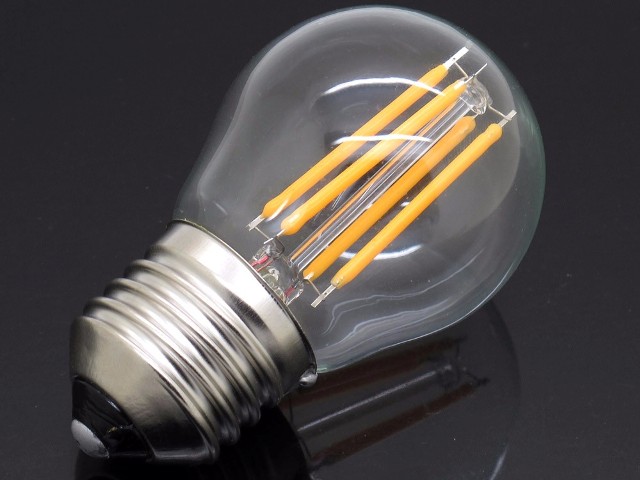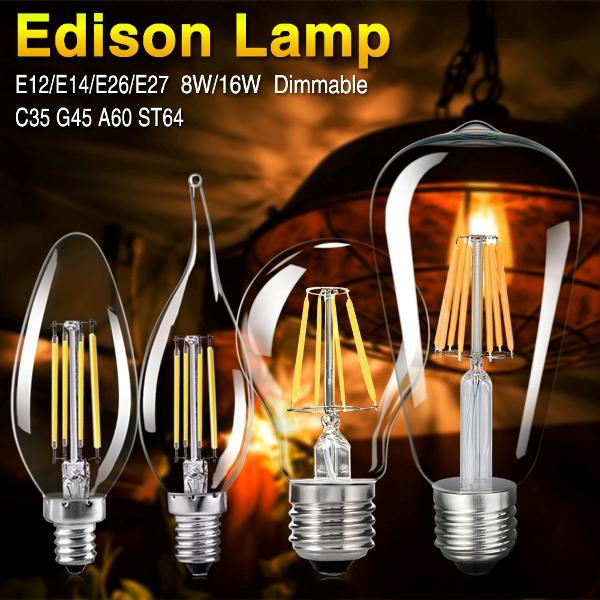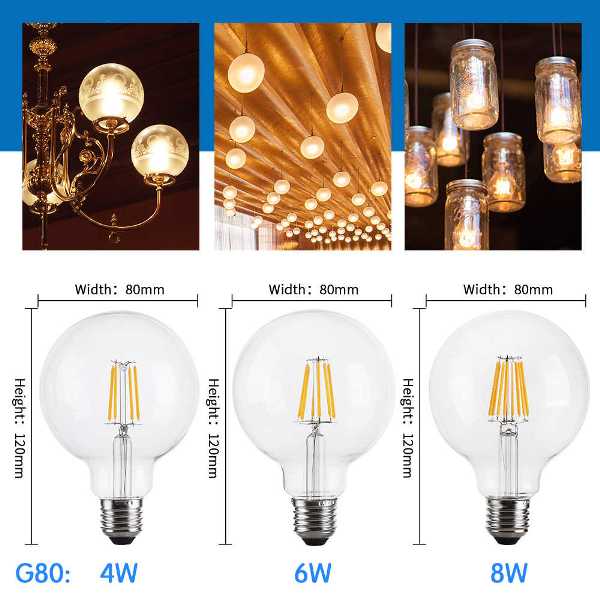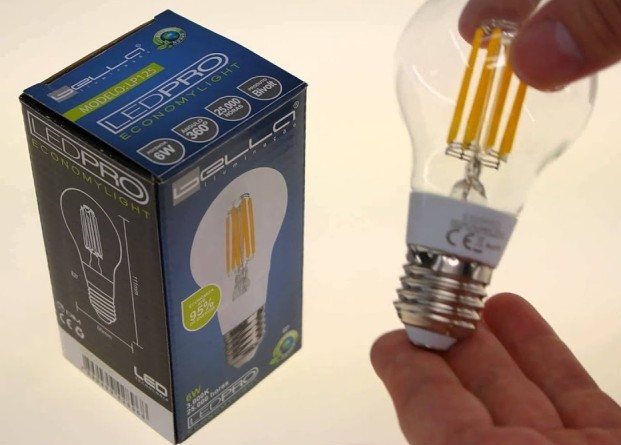Categories: Featured Articles » Sources of light
Number of views: 1908
Comments on the article: 0
FILAMENT LED lamps - device, types, characteristics, advantages and disadvantages
In 2008, the Japanese company Ushio, specializing in the manufacture of lighting equipment, first proposed the idea of creating LED lamps that would be as close as possible to classic incandescent lamps. The innovation was called “Filament Led”, because the word “filament” in translation from English means “filament”.
Bulbs of this type are colloquially called "filament" or "LED incandescent lamps," although in reality they are just LED lamps, just the LEDs in them are very small, specially designed for this particular technical solution.

The idea of creating this type of LED lamps was born out of a need for decorative lighting. At first, these were not very bright lamps; their luminous flux would not be enough to provide adequate lighting.
But a few years later, enterprising Chinese seized on the topic, and soon launched Filament Led technology lamps with a luminous flux equivalent to a 60-watt incandescent lamp. Today, on Aliexpress you can find filament lamps of absolutely any shape and size.

Filament lamps with AliExpress (often sold as Edison's decorative retro lamps):

The arrangement of the filament LED lamp is quite unusual. From an ordinary incandescent lamp, there is only a base, a glass bulb and a leg with electrodes. There is no tungsten filament here. Instead of a filament, tubular LED assemblies in the form of thin rods are fixed on the electrodes, and inside the base there is a small electronic voltage regulator on a small board.
If the base is smaller than the standard E27 (the board simply does not fit into E14), then the lamp base has an additional plastic cavity above the base into which the stabilizer board is installed.

The working element of the filament lamp is an elongated glass strip on which a chain of series-connected LEDs with leads at the edges is fixed. Small crystals of LEDs are mounted on glass using COG - chip on glass technology - a chip on glass.
The LEDs are coated with a yellow phosphor, which does not pass the ultraviolet part of the spectrum, and the light turns out to be warm, like an incandescent lamp with a spiral. There can be from 1 to 8 such elements in the lamp, depending on the power and the luminous flux required from the lamp. One element has a power of about 1 W and is powered by a network through the drivermounted on the base.

It is easy to understand that the current through the series-connected LEDs with a total rated power of 1 W is not able to overheat their crystals. The maximum temperature of the crystals in normal driver operation does not rise above 60 ° C.
In addition, the filament lamp bulb is sealed, inside it there is a gas mixture of high thermal conductivity based on helium, which evenly removes heat from the LEDs to the bulb surface, which eliminates possible overheating at the root. As for overheating due to the operation of the driver installed in the base, the driver does not overheat in high-quality lamps.

A technically simple capacitive or inductive stabilizer of a small size fits in the base and this is understandable. A large number of LEDs (usually 28 per element) simplifies power supply compared to other LED lamps, since the voltage drop on a single blue LED, for example, is from 2.48 to 3.7 volts.
Some types of lamps may additionally contain red LEDs (from 1.63 V to 2.03 V). Thus, two strands with a mixture of red and blue have a voltage of about 110 V, and four - from 220 to 240 V.Regular type LED lamps need a voltage reduction of 3–12 V, for this a larger step-down converter is needed than here.

The advantages of Filament Led technology lamps include the following:
-
decorative appearance, smooth luminous flux;
-
more than tenfold profitability in comparison with incandescent lamps;
-
full base compatibility with conventional cartridges;
-
low ripple;
-
long LED life;
-
variety of available color temperatures (you can choose a lamp with the required color temperature: warm or cold light);
-
possibility of dimming.
Of the disadvantages - only the fragility of the flask.
You should beware of low-quality filament lamps, in which cheap silicone is used on the working elements, which begins to crack after 200 hours of operation, so do not skimp on quality.
See also at bgv.electricianexp.com
:
